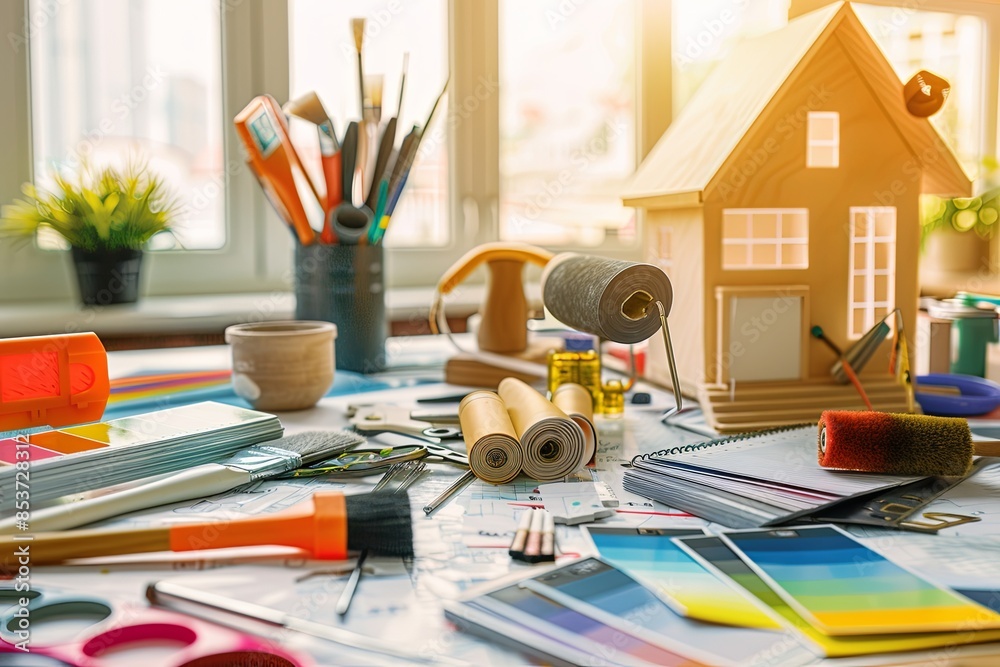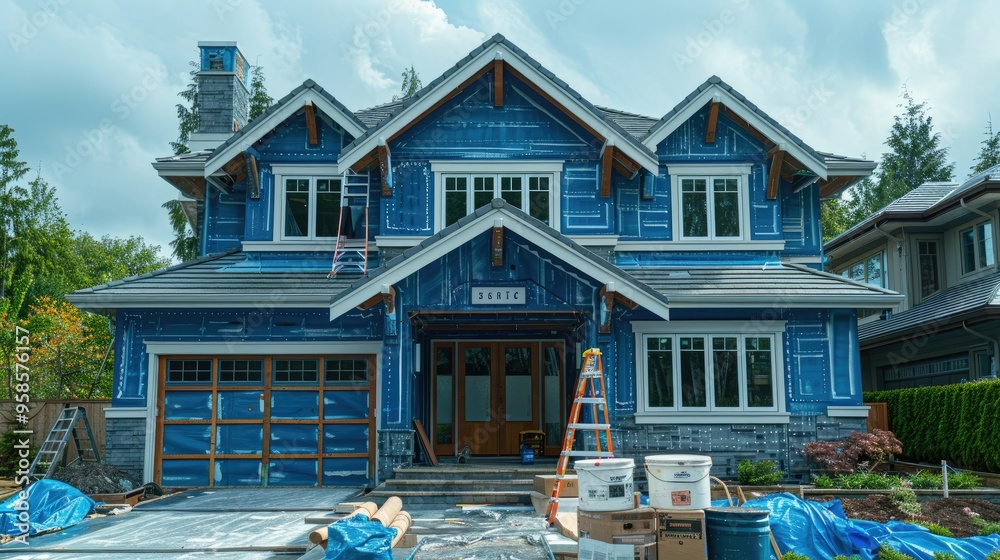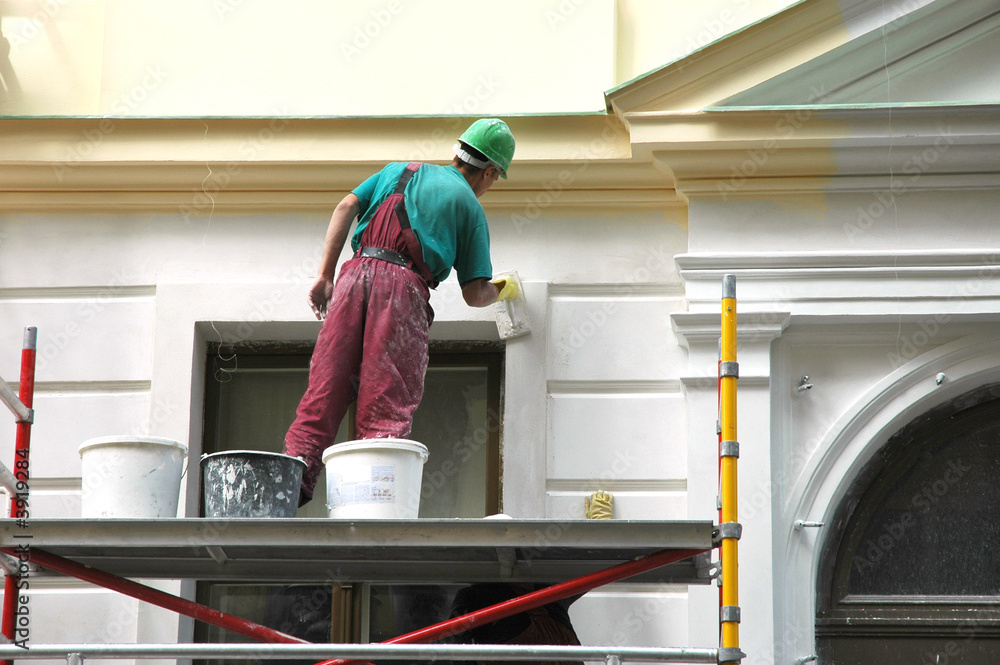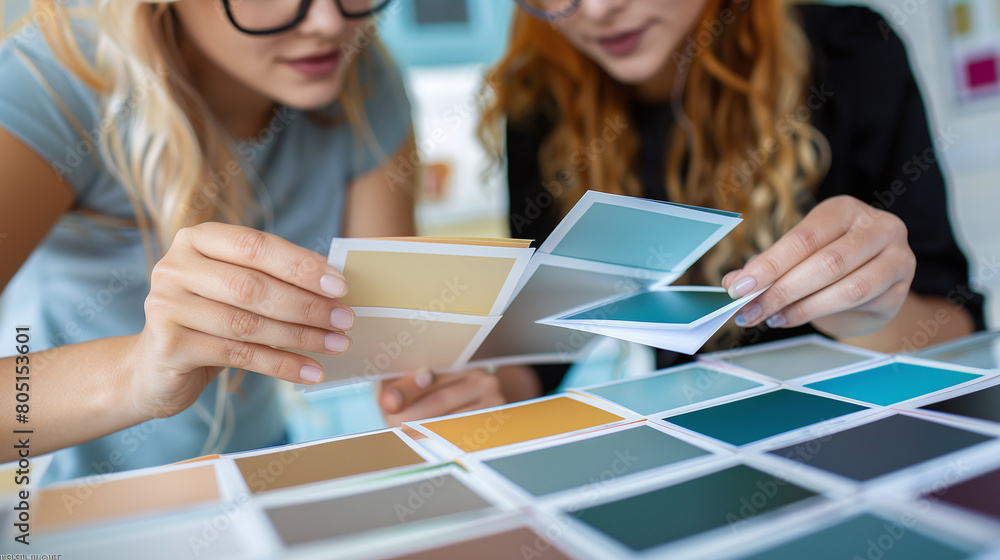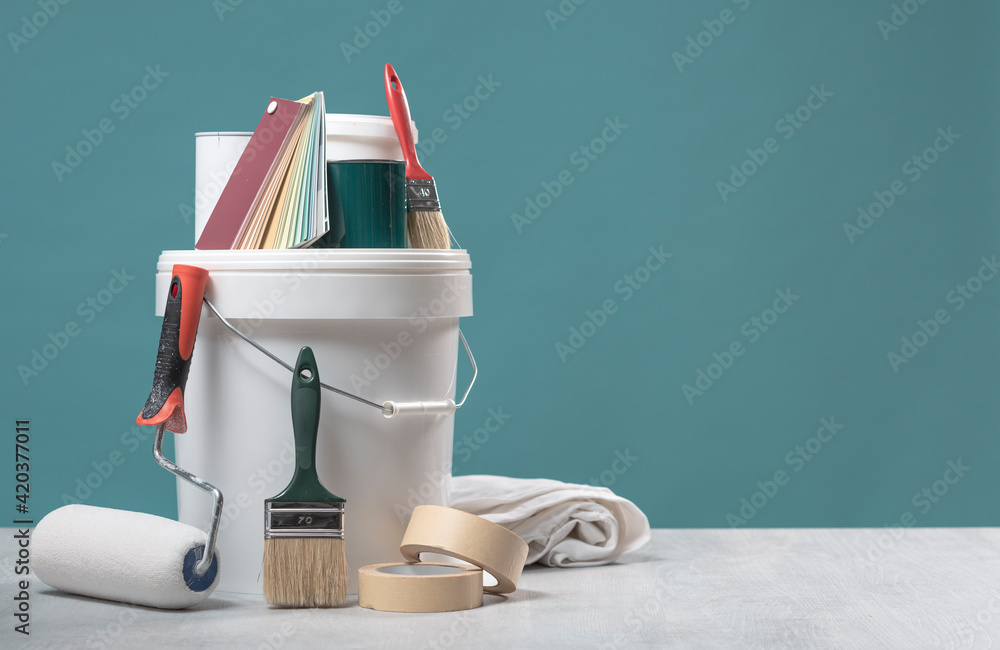1. Skipping Surface Preparation
Why It Matters: Proper surface preparation is crucial for paint adhesion and longevity. Failing to clean, repair, and prime surfaces can lead to peeling, cracking, and premature wear.
- Common Mistakes:
- Not cleaning the surface to remove dirt, mildew, and old paint.
- Ignoring repairs for cracks, holes, and damaged areas.
- Skipping sanding and priming steps.
- How to Avoid:
- Thoroughly clean the exterior using a pressure washer or hose with a high-pressure nozzle.
- Repair all damaged areas with appropriate fillers and replace any rotted wood.
- Sand rough spots and apply a high-quality primer to ensure a smooth, even surface.
2. Choosing the Wrong Paint
Why It Matters: The type of paint you choose affects the durability, appearance, and maintenance of your home’s exterior. Selecting the wrong paint can result in poor performance and additional costs for repainting.
- Common Mistakes:
- Using interior paint for exterior surfaces.
- Choosing low-quality or inappropriate paint for the surface material and climate.
- How to Avoid:
- Use high-quality exterior paint specifically designed for your surface material (e.g., wood, stucco, masonry).
- Consider local climate conditions and opt for paints that offer UV protection, mildew resistance, and weatherproofing.
3. Ignoring Weather Conditions
Why It Matters: Weather conditions significantly impact paint application and drying. Painting in unsuitable weather can lead to poor adhesion, blistering, and an uneven finish.
- Common Mistakes:
- Painting in extreme temperatures (too hot or too cold).
- Painting during high humidity or rainy conditions.
- How to Avoid:
- Check the weather forecast and choose a dry day with mild temperatures.
- Avoid painting in direct sunlight or during periods of high humidity.
Join HICP Homeowner’s Alliance
Connect with experts, get special discounts and enjoy member benefits
4. Applying Paint Too Thickly or Thinly
Why It Matters: The thickness of your paint application affects coverage, drying time, and the overall finish. Incorrect application can cause runs, drips, and uneven color.
- Common Mistakes:
- Applying too thick a coat, leading to runs and drips.
- Applying too thin a coat, resulting in poor coverage and durability.
- How to Avoid:
- Apply multiple thin coats rather than one thick coat.
- Follow the manufacturer’s recommendations for coverage and drying times between coats.
5. Neglecting Primer
Why It Matters: Primer creates a stable base for the topcoat, improves adhesion, and helps to cover stains and previous colors. Skipping primer can compromise the durability and appearance of your paint job.
- Common Mistakes:
- Painting directly on bare surfaces without priming.
- Using an inappropriate primer for the surface type.
- How to Avoid:
- Always apply a primer before painting, especially on new or repaired surfaces.
- Choose a primer that is compatible with your topcoat and surface material.
6. Poor Quality Tools and Materials
Why It Matters: Using high-quality brushes, rollers, and paint ensures a smoother application and a more professional finish. Inferior tools and materials can lead to visible brush marks, uneven coverage, and a shorter lifespan of the paint job.
- Common Mistakes:
- Using cheap, low-quality brushes and rollers.
- Skimping on paint quality to save money.
- How to Avoid:
- Invest in high-quality brushes, rollers, and other painting tools.
- Choose reputable paint brands known for their durability and performance.
7. Failing to Protect Surrounding Areas
Why It Matters: Paint splatters and spills can damage windows, doors, landscaping, and other surrounding areas. Proper protection ensures a clean and professional finish without unwanted messes.
- Common Mistakes:
- Not covering windows, doors, and fixtures.
- Neglecting to protect plants and landscaping.
- How to Avoid:
- Use painter’s tape, plastic sheeting, and drop cloths to cover and protect surrounding areas.
- Remove or cover exterior fixtures and trim before painting.
8. Inadequate Drying Time Between Coats
Why It Matters: Allowing adequate drying time between coats is essential for proper adhesion and a smooth finish. Rushing the process can lead to peeling, bubbling, and an uneven appearance.
- Common Mistakes:
- Applying subsequent coats before the previous coat is fully dry.
- Ignoring the manufacturer’s recommended drying times.
- How to Avoid:
- Follow the paint manufacturer’s instructions for drying times between coats.
- Be patient and ensure each coat is fully dry before applying the next.
9. Overlooking Safety Measures
Why It Matters: Painting the exterior of your home often involves working at heights and handling chemicals. Prioritizing safety helps prevent accidents and injuries.
- Common Mistakes:
- Not using proper safety gear, such as gloves, goggles, and masks.
- Failing to secure ladders and scaffolding properly.
- How to Avoid:
- Wear appropriate safety gear and clothing.
- Ensure ladders and scaffolding are stable and securely positioned.
- Follow safety guidelines and best practices for working at heights.
10. Neglecting to Maintain the Paint Job
Why It Matters: Regular maintenance extends the life of your paint job and keeps your home looking its best. Neglecting maintenance can lead to premature wear and the need for costly repainting.
- Common Mistakes:
- Ignoring signs of wear, such as peeling or fading paint.
- Failing to clean and inspect the exterior regularly.
- How to Avoid:
- Perform regular inspections and touch up any areas showing signs of wear.
- Clean the exterior surfaces periodically to remove dirt and mildew.
- Address any repairs promptly to prevent further damage.
Painting your home’s exterior is a rewarding project that can significantly enhance its appearance and value. By avoiding these common mistakes, you can ensure a professional, durable, and beautiful finish that will protect your home for years to come. Proper preparation, choosing the right materials, and following best practices are key to achieving the best results. Invest the time and effort to do it right, and you’ll enjoy the benefits of a high-quality exterior paint job that stands the test of time.

